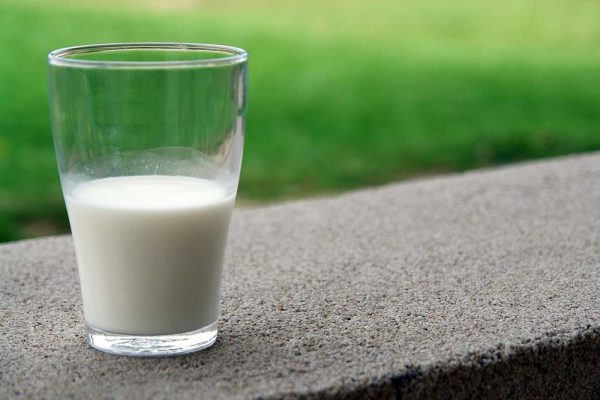In this article
View 8 More +The first things you notice about the Alaskan Klee Kai are the dog’s small size and their distinctive face. They are part of what endears people to this relatively new breed that resembles a miniature Husky. The breed’s temperament is similar to other Spitz-like dogs, and they may seem aloof, almost cat-like in their behavior. Yet, they are hard-working animals representative of their parent stock. Here is everything you could want to know about them.
Breed Overview
Height:
12–17 inches
Weight:
6–25 pounds
Lifespan:
13–16 years
Colors:
White, red, brown, gray, black
Suitable for:
Active families looking for a small and intelligent dog
Temperament:
Loyal, alert, independent, hard-working
The Alaskan Klee Kai is part of the American Kennel Club’s Foundation Stock Service (FSS) in the Non-Sporting Group. It is the pathway for a breed to gain official recognition by the organization. The United Kennel Club bestowed this honor on the breed in 1997 as part of its Northern Breed Group. These facts give you some idea about the pup’s temperament and care.
Alaskan Klee Kai Characteristics

Alaskan Klee Kai Puppies

Finding an Alaskan Klee Kai puppy may prove challenging, given the newness of the breed and the small population. We suggest starting with the Alaskan Klee Kai Club of America (AKKCA) to locate a reputable breeder. These sellers will ensure that the recommended pre-breeding health screenings are done to ensure healthy offspring.
Breeders sell pups of varying quality. Often, they sell pet-quality animals without breeding rights. It’s not unexpected for this pup, given the careful history of its development and its place with the FSS. Official status requires a three-generation pedigree with at least 150 dogs in its studbook 1. Undoubtedly, breeders are diligent about maintaining the integrity of the Alaskan Klee Kai during this stage.
Alaskan Klee Kai Origin & History
The history of the Alaskan Klee Kai can be traced to the 1970s and the work of Linda Spurlin and her family. Spurlin envisioned a smaller, companion-sized version of the Alaskan Husky. She made great efforts to develop the breed responsibly to become the endearing pup we know today. The dog made falling in love with their intelligent and independent nature easy.
The Alaskan Klee Kai’s bloodline includes many native breeds that excel at hard work, adaptability, and endurance to handle their northern home’s sometimes challenging climate conditions. You see it in the breed’s cold hardiness, double coat, and intelligence.

Temperament & Intelligence of the Alaskan Klee Kai
The Alaskan Klee Kai’s bloodline includes several breeds with the common denominator being working dogs. That makes for a close relationship with their owners, which explains their steadfast loyalty. It also accounts for the pup’s independence. Their jobs required stamina and alertness. The latter comes into play with the dog’s protective nature. They are moderately inclined to bark to warn of threats.
The Alaskan Klee Kai’s ancestors forged tight bonds, which is evident in this dog’s intolerance of being alone. Prospective owners should consider this trait carefully. This pooch isn’t the best choice for individuals who work away from home a lot. They fare best in active households. Early socialization is also imperative since these animals are naturally wary of strangers.
Are These Dogs Good for Families? 🧑🧑🧒
The Alaskan Klee Kai is affectionate with their family members. They are playful and would make an excellent canine companion for the kids. However, we recommend teaching your children how to behave around your pet since they have a moderate tendency for nippiness. It’s something you must manage as part of your pet’s training.

Does This Breed Get Along With Other Pets?
The Alaskan Klee Kai may get along with other dogs if introduced to them early. The breed has a strong prey drive, making it inappropriate in a household with cats and small animals. It’s instinctive behavior that you may find difficult to corral. This pup also has a high wanderlust potential. If something catches their attention, they’ll try to follow it.

Things to Know When Owning an Alaskan Klee Kai
The breed is relatively new, making for a limited gene pool. That means some traits and health issues may occur more frequently. The other concern is the integrity of the dog. The breed standard is pretty specific about the animal’s markings, particularly with the mask. Therefore, doing your research is essential for ensuring you are getting a purebred dog.
Food & Diet Requirements 🦴
You should give your pet a commercial diet formulated for their size and life stage. The Alaskan Klee Kai is a small dog, making products aimed at these dogs appropriate. You should feed your pet three to four times daily when they are puppies. That will ensure an adequate nutrient and fuel supply to support their growth and development. It’s worth noting small breeds mature quicker than large ones.
The Alaskan Klee Kai may reach sexual maturity at around 9 months old. You can then transition your pup to an adult diet with a twice-a-day feeding schedule. This breed has a low propensity for weight gain. Nevertheless, we recommend reserving treats as training aids to get the most value out of them.
Exercise 🐕
The Alaskan Klee Kai is a relatively active dog. They will happily accompany you on walks in the neighborhood or hikes in the woods. We recommend keeping this dog on a lead because of their prey drive. You should keep your pet in a fenced yard to let them run. You should check the perimeter of your yard occasionally for signs of digging, as this pooch may escape if given the chance.
Training 🎾
The Alaskan Klee Kai is somewhat easy to train, although they are quite sensitive to harsh words. You’ll have an easier time if you use positive reinforcement instead of punishment. Of course, the training aids will help motivate your pet. This pup is best suited for experienced pet owners instead of novices. We recommend starting your dog’s lessons early in life with frequent repetition.
This dog is an excellent candidate for other activities, such as agility and obedience competitions. They will provide more ways to interact with your pet and improve their quality of life with mental stimulation and enrichment.

Grooming ✂️
It’s no surprise that the Alaskan Klee Kai has a thick double coat to keep them warm in northern climes. Their undercoat is dense and cotton-like. They will blow their coat twice yearly. Regular brushing can keep the hair at a minimum. This breed doesn’t have a strong doggy odor, and they keep themselves pretty clean, making baths necessary only a few times yearly, not unlike other Spitz-like dogs. However, be sure to keep their teeth brushed and nails trimmed!
Health and Conditions 🏥
The Alaskan Klee Kai is a relatively healthy breed. That comes from being one of the new kids on the block and a lower risk of inbreeding. Nonetheless, we recommend only buying from reputable sellers who have their animals tested for hereditary and congenital conditions known to occur in this breed. If possible, request to see the mother and the puppy’s littermates before purchasing your pet.
- Juvenile cataracts
- Other eye issues
- Patellar luxation
- Cardiovascular issues
- Autoimmune thyroiditis
- Factor VII deficiency

Male vs. Female
The size difference between males and females isn’t significant, making it a moot point. Either sex will make a delightful pet with the proper training and socialization. After all, the environment and upbringing play crucial roles in the animal’s temperament. Behavioral problems are less frequent in pets that are active and exposed to new people and situations.


3 Little-Known Facts About the Alaskan Klee Kai
1. The Alaskan Klee Kai’s Name Is Fitting
The breed’s name comes from the Athabaskan language’s words for “little dog.” It’s appropriate, given the impetus behind the dog’s development.
2. The Year 2000 Marked a Pivotal Time for the Alaskan Klee Kai
This year was the first time a puppy was born outside the United States in England. The breed has won fans in 20 more countries and counting.
3. The Breed’s Official Standard Calls for the Dogs to be Shown in Their “Natural State”
Any trimming, other than the feet, is forbidden, which judges will penalize as a serious fault.
Final Thoughts
The Alaskan Klee Kai is an adorable pup with an active and talkative personality to match. This dog brings together some of the best traits of northern breeds in a compact size. However, they need an engaged owner who is willing and able to spend time with their pet. This pooch needs mental stimulation and plenty of exercise for a good quality of life. After all, caring for a dog is a commitment. However, if you do things right, this dog is sure to make a lovely family pet.
Featured Image Credit: bon9, Shutterstock


















